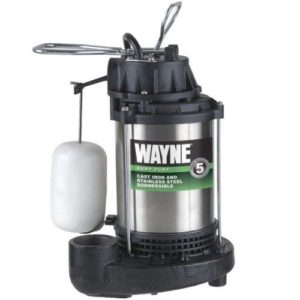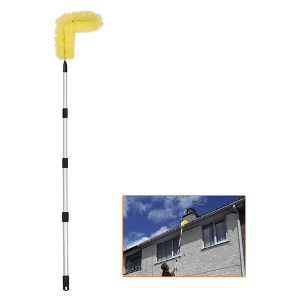If you’ve lived in an area that gets hit by hurricanes, you probably think you have a handle on basic home prep before a storm. Tim Tracy at Groundworks clued us in to some things homeowners may need to remember before, and after, the big storm hits.
Surprising Ways to Protect Your Home from Hurricanes
For over 11 years, SafeWise experts have conducted independent research and testing to write unbiased, human reviews (not robots). Learn more.
Alina writes for MSN, MTV, and CBSNews, blending safety expertise with her passion for simplifying technology. Alina was also trained as a first responder and worked as a volunteer firefighter.
When extreme weather is in full swing, we want everyone to stay safe. Here are some resources if you or a loved one are impacted by storms.
- Track the storms to stay up-to-date on the latest hurricane developments, warnings, and advisories.
- Stay informed about local developments and find resources at DisasterAssistance.gov.
- Know about evacuation shelters through the free Red Cross Emergency app, calling 1-800-RED-CROSS (800-733-2767) or go to redcross.org/shelter.
- Use our emergency resources on SafeWise for everything including generators, emergency kits, flooding, and how to prep kids for hurricanes.
By signing up, you agree to our Terms and Conditions and Privacy Policy.
Everyone knows to cover their windows when a hurricane is approaching, but are there other preparations a homeowner should take care of?
There sure are:
- Check the foundation drainage system. Along with gutters and downspouts, make sure your basement or crawl space is waterproof with the necessary drainage systems.
A sump pump with battery backup is essential during power outages. - Check your sump pump.
Make sure your sump pump is functioning. In the case of a power outage, it’s very important to have a backup power system that will keep the system running. - Maintain your roof.
Repair any loose or missing shingles. Any damage here can allow rain into your attic doing a great deal of damage to your home. - Review home insurance.
Flooding from storms isn’t typically covered by homeowner’s insurance. Check with your insurance agent or the National Flood Insurance Program on the coverage that’s available.
What are some post-storm damage and “silent” dangers homeowners need to be aware of?
During a hurricane, water generally causes more damage than wind. Just one inch of water can cause $25,000 in damages, according to FEMA.
Siding or roofing is falling off, windows aren’t properly secure, and gutters that aren’t cleared have major potential to cause water damage. If the house looks like it has openings, a storm can take advantage and cause damage.
Also, clogged drains can exacerbate flooding. If water has nowhere to escape, it will pool and rise. Making sure drains are clean and your sump pump is functioning will ensure intruding water also has a place to escape.
Make sure you have an extra sump pump (or backup power) ready and the contact information for home services professionals to call in case your property is heavily damaged.
If a person is evacuating, are there any extra steps a homeowner should take to protect their home?
First, cover windows and secure doors.
Should a window break, it will not only let in rain but wind. Once the wind finds an opening, it can put a great deal of pressure on the walls and on the roof. Put plywood over your windows or hurricane shutters. Add a wind-load garage door.
Next, keep gutters clear. They move rain off your roof and guide it away from the foundation. Any pooling around the foundation, particularly if the ground is already saturated, can cause basement or crawl space flooding.
After the hurricane blows through, what should I check first?
If you return to a home that looks unsafe to enter, do not enter. If the home appears structurally sound, the checklist of items to inspect starts from the ground up. Check your basement or crawl space for water intrusion or damage. Clear out any water that remains as quickly as possible to ensure further damage doesn’t occur, and to prevent black mold growth.
Once the basement is clear, check the interior walls for cracks and separation, the windows to ensure they haven’t been knocked out, siding that may have been displaced, and (with proper precaution) the roof inside the attic and outside the home.
Dealing with flooding is stressful, but SafeWise has your back. Check out our flooding guide to learn how to handle flood damage.
(Amazon only): *Product prices and availability are accurate as of post date and are subject to change. Any price and availability information displayed on Amazon at the time of purchase will apply to the purchase of this product. Safewise.com utilizes paid Amazon links.
Certain content that appears on this site comes from Amazon. This content is provided “as is” and is subject to change or removal at any time.
Recent Articles





